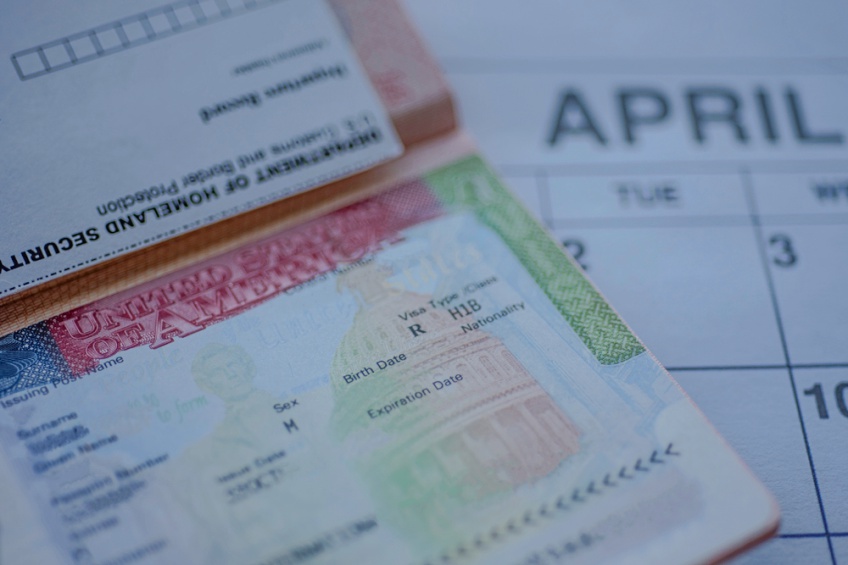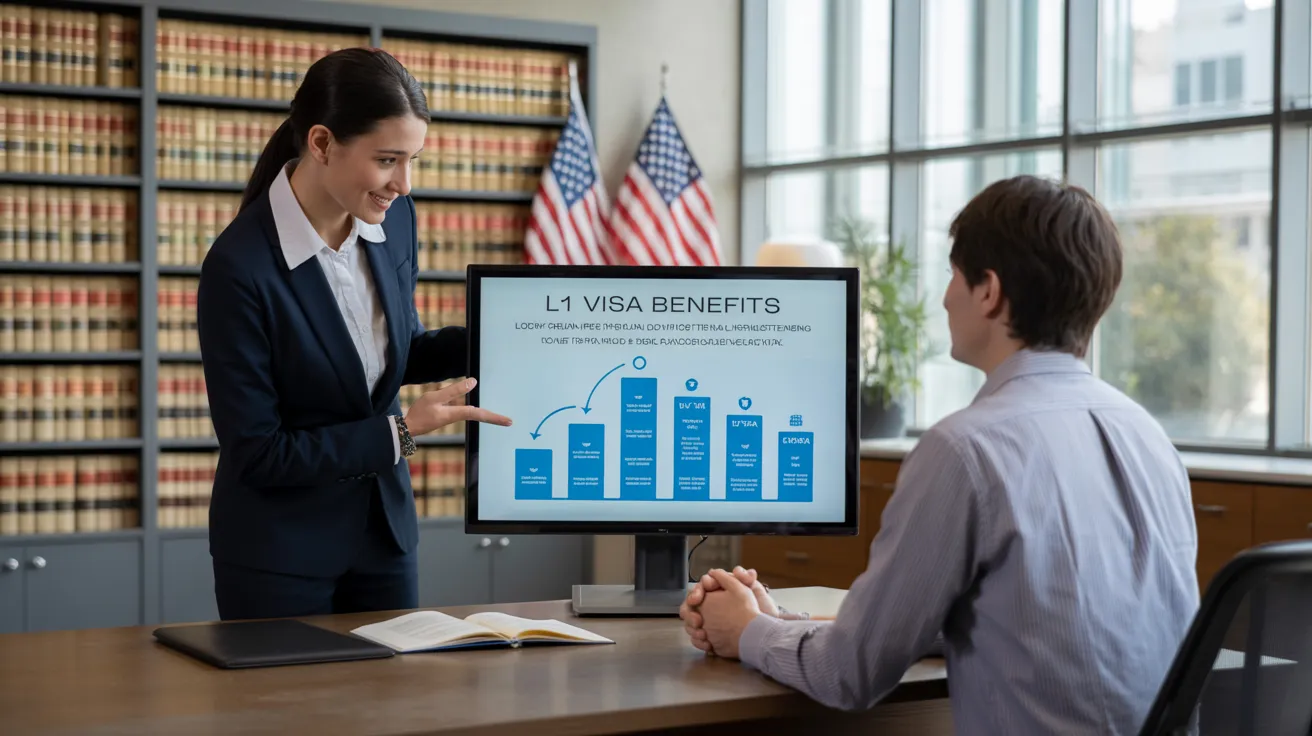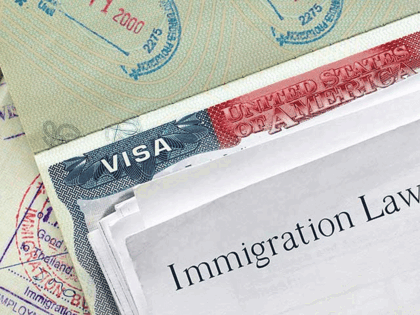Opening Opportunities: A Comprehensive Overview to the L1 Visa Process
The L1 visa procedure presents an essential path for international firms seeking to transfer key workers across borders. Understanding the subtleties of eligibility standards, the distinctions between L-1A and L-1B visas, and the complexities of the application procedure can greatly impact a candidate's success. Steering this facility landscape is not without its difficulties, and careful attention to documents and company sponsorship is vital. As we check out the essential components of this process, the methods for getting over potential obstacles will certainly end up being evident, exposing exactly how educated prep work can open a world of possibilities.
Understanding the L1 Visa
Comprehending the L1 visa involves identifying its relevance as a vital device for multinational business seeking to move skilled employees between global workplaces. This non-immigrant visa classification helps with the movement of execs, managers, and specialized expertise workers to the United States, consequently allowing organizations to maintain operational continuity and harness global ability effectively. The L1 visa is divided into two key categories: L-1A for managers and execs, and L-1B for staff members possessing specialized knowledge.The L1 visa offers a vital function in improving a business's competitive side in the worldwide industry - L1 Visa. By permitting business to relocate their crucial employees, organizations can assure that critical jobs are taken care of by certified people who are already familiar with the firm's society and operational procedures. This internal transfer device not only fosters understanding sharing yet likewise promotes technology and collaboration across borders.Moreover, the L1 visa is usually favored for its fairly simple application procedure compared to other visa classifications, as it allows for twin intent, allowing owners to seek permanent residency while on a short-lived job visa. This function makes the L1 visa particularly appealing for both companies and employees, as it simplifies the pathway for proficient professionals to develop long-term residency in the United States
Qualification Standards
Eligibility for the L1 visa depends upon several crucial requirements that ensure both the worker and the employer satisfy particular credentials. This non-immigrant visa is created for international companies to move staff members from international workplaces to U.S. counterparts.Firstly, the employer needs to be a certifying company, which includes a moms and dad business, branch, affiliate, or subsidiary of a united state company. The firm must have been doing business for a minimum of one year both in the U.S. and abroad. This guarantees that the business has enough functional stability and a legitimate presence.Secondly, the staff member should hold a managerial, executive, or specialized knowledge position. For L1A visas, the candidate should show supervisory or executive credentials, while L1B visas focus on specialized knowledge pertaining to the organization's products, solutions, or procedures. Furthermore, the employee should have benefited the international entity for a minimum of one constant year within the last 3 years prior to their application.Lastly, the staff member's duty in the U.S. have to straighten with their previous placement, guaranteeing that their abilities and knowledge are leveraged for the firm's benefit.
Types of L1 Visas
The L1 visa group consists of 2 key kinds designed to assist in the transfer of employees within international companies: the L1A visa for supervisors and execs, and the L1B visa for employees with specialized understanding. Each kind serves distinctive objectives and has specific qualification criteria.The L1A visa is customized for individuals that hold supervisory or executive placements within a company. This visa enables high-level employees to move to an U.S. branch, subsidiary, or affiliate of the exact same company. Candidates for the L1A visa need to demonstrate that they have actually been employed in a supervisory or executive ability for at the very least one continual year within the past three years prior to their application. In addition, this visa uses a longer duration of remain, originally provided for 3 years, with the possibility of extensions for approximately 7 years.In contrast, the L1B visa is planned for professionals with specialized expertise pertaining to the company's items, solutions, or procedures. To qualify, candidates must prove that their proficiency is critical to the organization and that they have actually benefited at the very least one continuous year within the last 3 years in a duty that needed this specialized knowledge. The L1B visa is at first approved for 3 years, with extensions readily available for as much as 5 years.Both visa types are vital for business looking for to improve their international operations by leveraging experienced personnel, consequently promoting technology and efficiency within the U.S. market.
Application Process
Guiding via the L1 copyright process entails a number of essential actions that must be carefully followed to assure a successful result. The procedure begins with the U.S. company, who have to first develop eligibility by demonstrating a certifying relationship with the foreign entity and validating that the worker fulfills the certain requirements for the L1 visa classification being sought.Once eligibility is validated, the employer initiates the procedure by submitting Form I-129, the Application for a Nonimmigrant Worker, with the United State Citizenship and Immigration Provider (USCIS) This type should be gone along with by a comprehensive summary of the work responsibilities to be performed, the business structure of both the U.S. and international entities, and the staff member's certifications. It's vital to validate that all info is exact and full, as noninclusions or errors can lead to delays or denials.Upon approval of the I-129 request, the next step entails the staff member getting the L1 visa at a united state embassy or consular office in their home country. This stage calls for the completion of Kind DS-160, the Online Nonimmigrant copyright, and setting up a meeting. During the interview, the applicant must offer proof supporting their qualifications and the company's petition.After the visa is granted, the staff member can go into the United States to operate in the designated role. In general, mindful preparation and adherence per action of the application process are important for a successful L1 visa end result.
Called for Documents

Essential Forms Needed
Navigating the L1 Visa procedure requires cautious attention to the essential kinds and paperwork required for an effective application. The primary kind needed is the Kind I-129, Request for a Nonimmigrant Worker, which have to be finished and sent by the united state employer. This kind lays out the details of the employment offer and the credentials of the employee seeking the L1 Visa.Alongside Type I-129, the candidate will certainly need to full Type I-539 if going along with relative are also making an application for visas. In addition, the employer should offer evidence of the certifying partnership between the U.S. entity and the international entity, commonly necessitating the submission of company files such as articles of unification or monetary statements.Moreover, it is important to include the L Category Supplement to Kind I-129, which defines the sort of L Visa being asked for-- either L-1A for managers and execs or L-1B for staff members with specialized expertise. Lastly, candidates should guarantee that all kinds are authorized and dated suitably, as incomplete entries can result in delays or denials. Correctly setting up these important kinds lays the foundation for a smoother L1 copyright process.

Supporting Proof Demands
Supporting paperwork is crucial for a successful L1 copyright, as it validates the claims made in the application. Applicants should give an array of documents to demonstrate qualification for the visa, which is classified into 2 main kinds: evidence of the qualifying partnership between the united state and international entities and proof of the candidate's qualifications.To develop the partnership, applicants need to submit documentation such as company business graphes, monetary statements, and evidence of ownership. These documents validate that the international firm has a certifying relationship with the united state employer, whether as a parent firm, subsidiary, branch, or affiliate.For the candidate's certifications, necessary files consist of a thorough employment letter from the foreign employer, laying out the applicant's work title, obligations, and duration of work. Furthermore, instructional qualifications, such as degrees and diplomas, should be offered to verify the candidate's experience in the pertinent area.
Employer Sponsorship Records

Usual Difficulties
Navigating the L1 visa procedure presents several usual obstacles that candidates must be conscious of. Secret problems typically include stringent documentation needs, potential hold-ups in processing times, and the requirement for strict lawful conformity. Comprehending these obstacles can aid applicants better prepare and minimize threats during their copyright trip.
Documentation Needs
The L1 copyright procedure usually provides considerable difficulties connected to documentation requirements. Candidates have to provide comprehensive documentation to develop qualification, which can bring about confusion and potential hold-ups. Secret files consist of evidence of a certifying relationship between the U.S. and foreign employer, proof of the applicant's employment background, and comprehensive details regarding the work role in the U.S.One common challenge is collecting adequate evidence to demonstrate the nature of the certifying connection. Companies frequently have a hard time to existing clear business graphes or economic statements that show the connection between the entities. In enhancement, making sure that letters of support from employers precisely show the candidate's job responsibilities and credentials is necessary, as unclear summaries can lead to denials.Another concern develops from the need for detailed task summaries that align with the L1 visa categories. Candidates should express not only their current duty but likewise their managerial or specialized understanding duties plainly. This requires an extensive understanding of both the candidate's position and the governing language made use of in L1 applications.
Handling Time Delays
Experiencing delays in handling times is a common challenge faced by L1 visa candidates, often causing disappointment and uncertainty. Numerous variables contribute to these delays, consisting of high application volumes, boosted examination of applications, and administrative backlogs within the U.S. Citizenship and Immigration Provider (USCIS) Candidates might locate that processing times can differ substantially relying on the solution center managing their application, as each center has its very own workload and effectiveness levels. In addition, the intricacy of the applicant's instance, such as the need for substantial paperwork or explanation, can further expand wait times.In some circumstances, issues associated with the candidate's current migration condition or previous visa background might additionally lead to additional hold-ups, as USCIS may require additional review or info. It is important for prospects to stay aggressive during this duration, keeping open interaction with their companies and legal representatives to address any type of possible worries promptly.Understanding these processing time challenges can aid L1 visa applicants prepare for possible hold-ups and mitigate the influence on their change and career strategies. Persistence and persistance are important virtues in maneuvering this elaborate procedure.
Legal Compliance Issues
Numerous L1 visa candidates encounter lawful conformity issues that can complicate their journey towards getting the visa. Understanding and adhering to the details laws set by the united state Citizenship and Immigration Provider (USCIS) is crucial. Typical challenges include demonstrating the qualifying connection between the foreign and united state companies, in addition to proving that the candidate possesses the requisite specific understanding or managerial capacity.Additionally, applicants have to give detailed paperwork detailing their task duties, business structure, and monetary practicality of the united state entity. Insufficient or imprecise documents can bring about hold-ups and even rejections. Companies need to likewise guarantee that they follow labor laws, including wage and functioning problem standards, which can affect visa eligibility.Another usual concern includes preserving conformity with the terms of the visa when granted. Changes in employment status, task duties, or firm framework can require modifications to the visa, which if not addressed quickly can cause legal issues. Therefore, remaining notified regarding compliance requirements and seeking legal advice when needed is necessary to browse the complexities of the L1 visa process efficiently.
Tips for Success
Success in the L1 copyright procedure often rests on thorough prep work and interest to detail. To boost your chances of approval, begin by extensively understanding the qualification requirements for both the L1A and L1B visa groups. Evaluate whether your position at the firm certifies as supervisory, exec, or specialized expertise, as this categorization significantly affects your application.Next, gather extensive documents that confirms your cases. This consists of business charts, in-depth work descriptions, and proof of the firm's operational structure. Clear and succinct evidence of the qualifying partnership in between the U.S. entity and the international entity is vital. Confirm that all files are organized realistically and offered in a professional manner, as this shows your commitment and seriousness regarding the application.Engage the services of an experienced migration attorney that focuses on L1 visas. Their experience can verify important, assisting you with complicated laws and ensuring that all documentation abides with existing legislations. In addition, plan for the interview by exercising responses to typical questions and preparing to discuss your function and payments to the firm in deepness.
Often Asked Concerns
Can Family Members Accompany the L1 Visa Holder?
Yes, family participants of L1 visa holders, consisting of spouses and single children under 21, can accompany the key visa owner. They may additionally apply for L2 visas, which allow them to live in the United L1 Visa Qualifications States.
How Much Time Can I Remain On an L1 Visa?
The L1 visa allows initial remains of approximately 3 years, with the possibility of expansion. L1A visa holders might stay for a maximum of 7 years, while L1B visa owners can continue to be for five years.
Can L1 Visa Holders Use for a Permit?
Yes, L1 visa owners can look for a permit. L1 Visa. They might pursue irreversible residency with employment-based classifications, normally requiring sponsorship from their company, provided they meet the needed certifications and documentation needs
What Takes place if My L1 copyright Is Refuted?
If your L1 copyright is denied, you may get a notice outlining the factors for rejection. You can look for to appeal the decision, reapply, or check out alternative visa alternatives based on your situations.
Exist Any Type Of Travel Restrictions With an L1 Visa?
An L1 visa typically permits global traveling; nevertheless, re-entry to the U. L1 Visa.S. is contingent upon preserving legitimate status. Vacationers need to ensure conformity with visa conditions to stay clear of problems upon return
Conclusion
